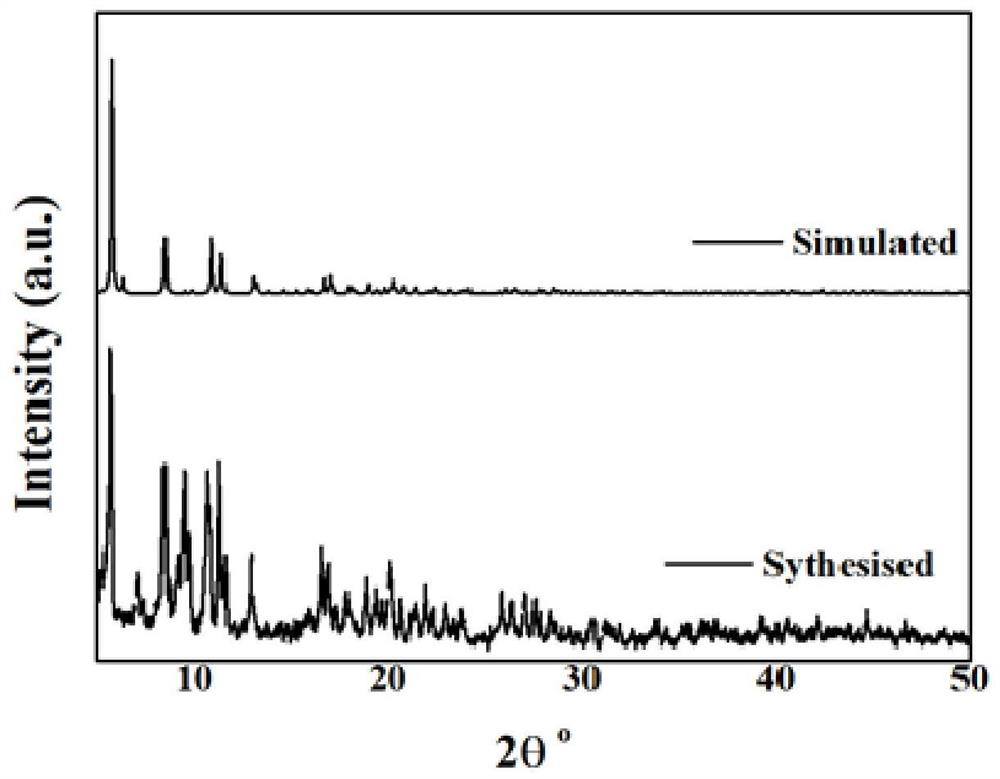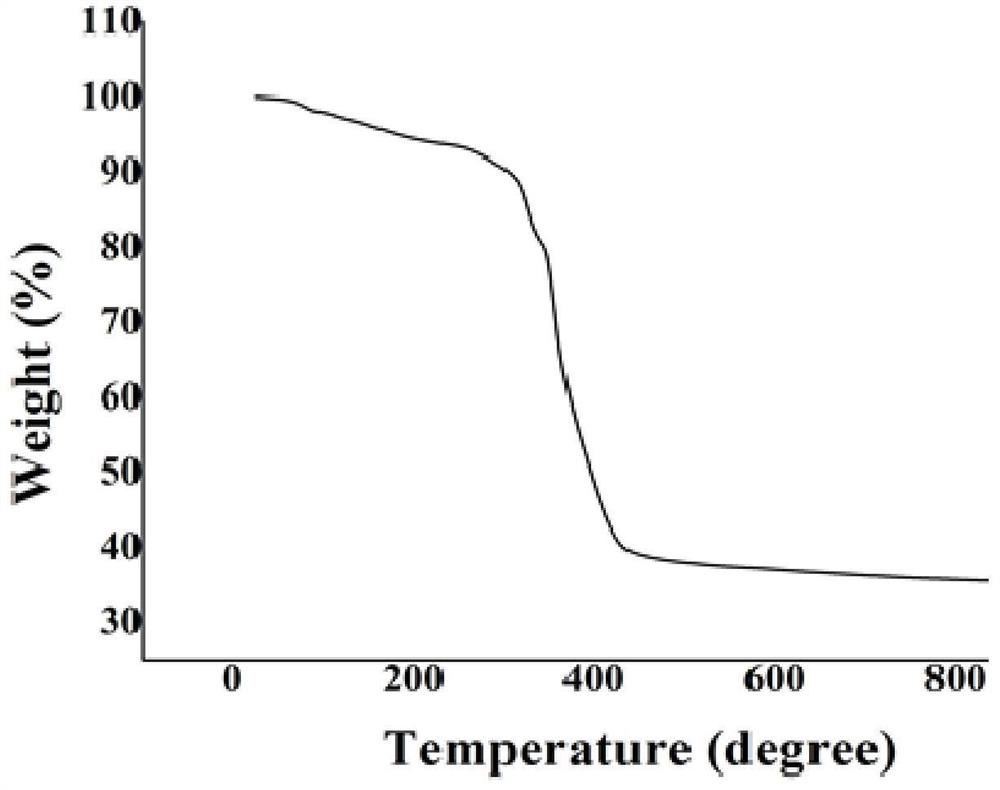Novel cobalt (III)-sulfur cluster-based coordination polymer with single-molecule magnet property
A technology of single-molecule magnets and coordination polymers, applied in the field of molecular magnetism, can solve problems such as lack of synthetic routes and difficulty in controlling magnetic coupling
- Summary
- Abstract
- Description
- Claims
- Application Information
AI Technical Summary
Problems solved by technology
Method used
Image
Examples
Embodiment 1
[0028] ① Pour sodium hydroxide (0.003 mol, 0.1200 g) into 10 ml of absolute ethanol, and then ultrasonically in an ultrasonic cleaner for a period of time until all sodium hydroxide is dissolved in absolute ethanol (wherein NaOH can be prepared by KOH, LiOH 、Na 2 CO 3 , NaHCO 3 and other alkaline substances instead);
[0029] ②Add o-mercaptobenzoic acid (0.003 mol, 0.4626 g) into the solution in ①, and stir on a constant temperature magnetic stirrer until completely dissolved;
[0030] ③ CoCl 2 ▪6H 2 O (0.0015 mol, 0.3565 g) was completely dissolved in 5 ml of deionized water, and then the solution was slowly dropped into the above solution with a dropper, and continued to stir for half an hour (the cobalt raw material can also be CoSO 4 ▪6H 2 O, Co(NO 3 ) 2 ▪6H 2 O. CoC 4 h 6 o 4 ▪4H 2 O and other commonly used cobalt salts are acceptable);
[0031] ④ Pour the stirred solution into a 30 ml polytetrafluoroethylene-lined stainless steel reaction kettle, and react ...
Embodiment 2-5
[0034] The reaction temperature in step ④ was set to 120°C, 150°C, 180°C, and 200°C respectively, and the other reaction conditions were the same, and a black powder product was prepared.
[0035] The following materials are mainly characterized by products prepared at a temperature of 120 °C, at which the yield of the complex is the highest.
PUM
 Login to View More
Login to View More Abstract
Description
Claims
Application Information
 Login to View More
Login to View More - R&D
- Intellectual Property
- Life Sciences
- Materials
- Tech Scout
- Unparalleled Data Quality
- Higher Quality Content
- 60% Fewer Hallucinations
Browse by: Latest US Patents, China's latest patents, Technical Efficacy Thesaurus, Application Domain, Technology Topic, Popular Technical Reports.
© 2025 PatSnap. All rights reserved.Legal|Privacy policy|Modern Slavery Act Transparency Statement|Sitemap|About US| Contact US: help@patsnap.com



